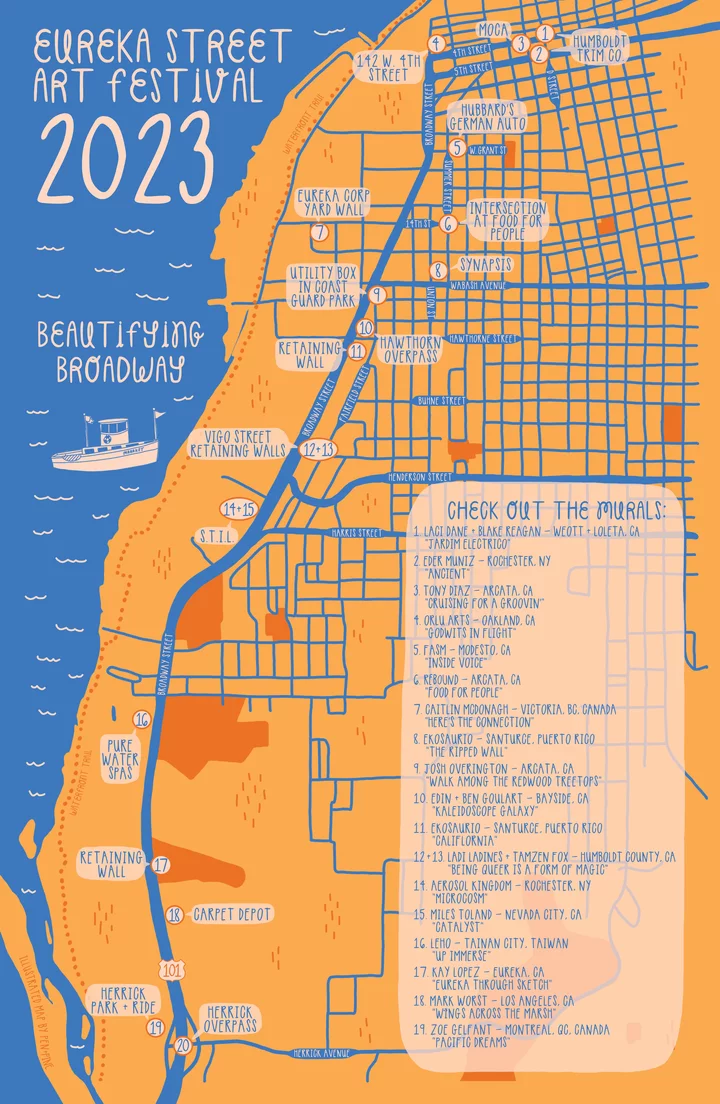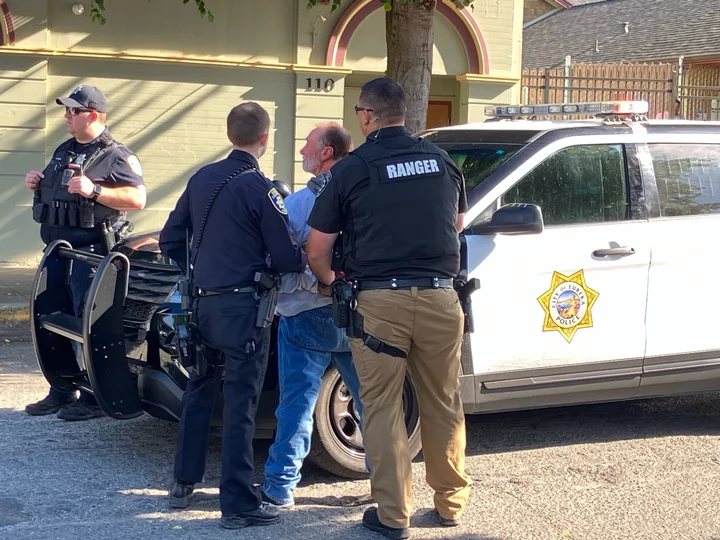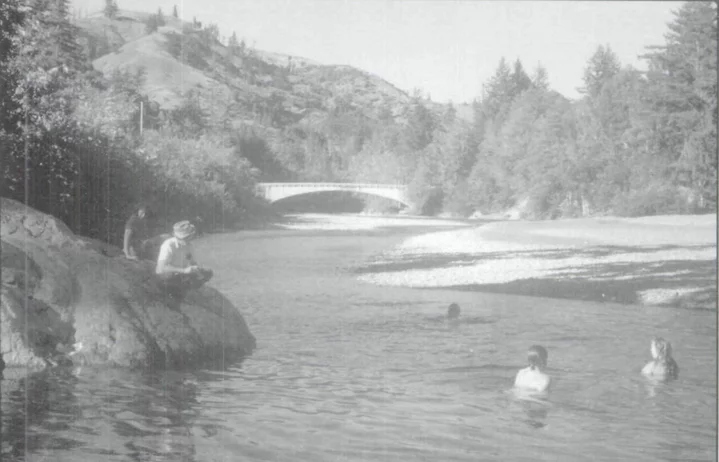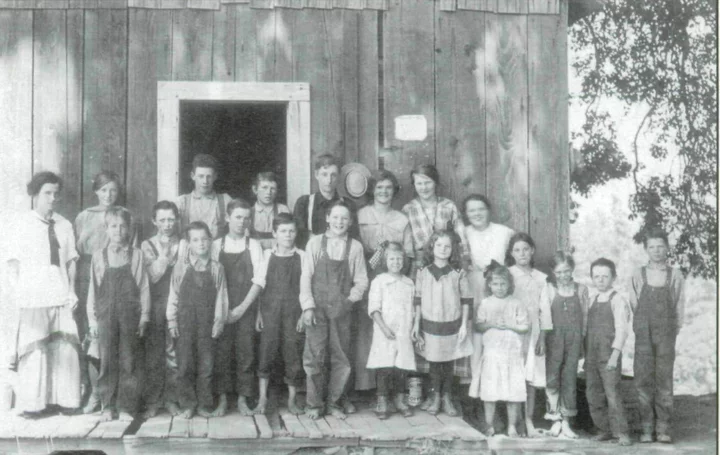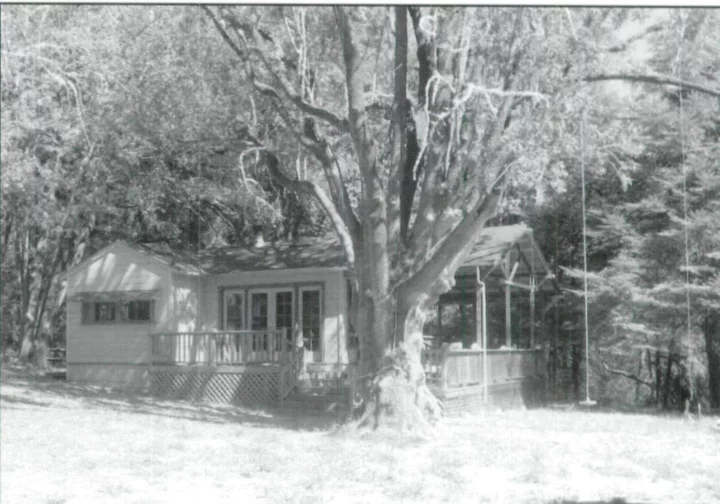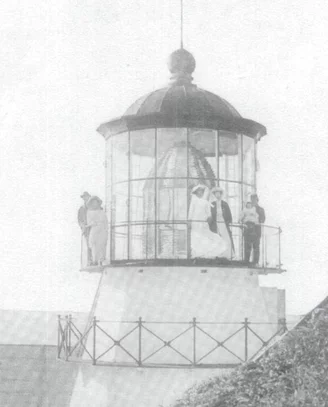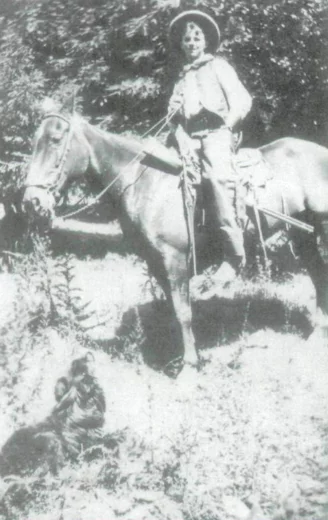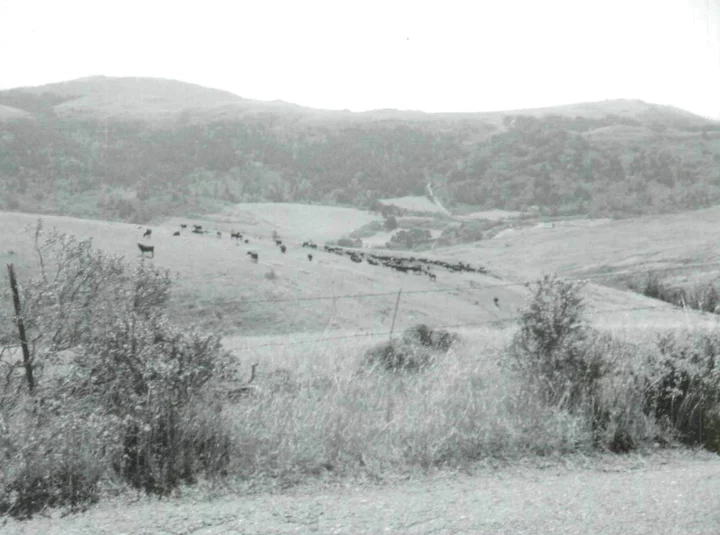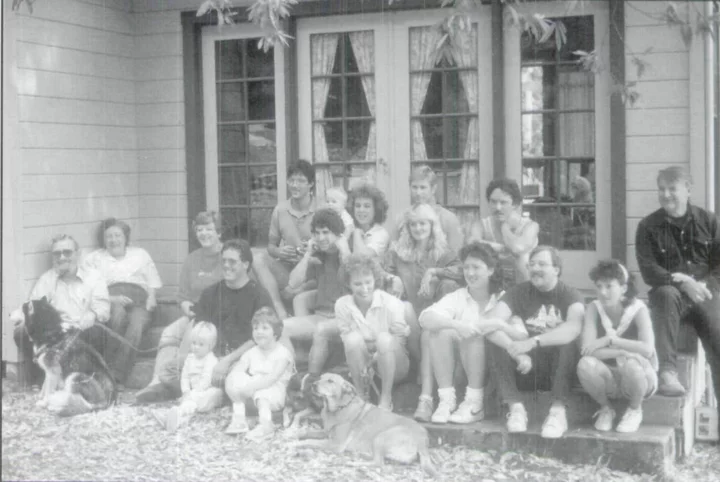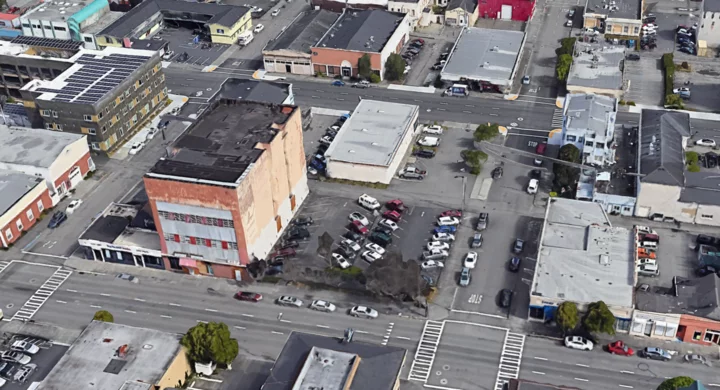GROWING OLD UNGRACEFULLY: It’s Just Neurons
Barry Evans / Sunday, July 16, 2023 @ 7 a.m. / Growing Old Ungracefully
“O,
what a world of unseen visions and heard silences, the insubstantial
country of the mind! …And the privacy of it all! A secret theater
of speechless monologue and prevenient counsel…”
— Julian Jaynes, The Origin of Consciousness in the Breakdown of the Bicameral Mind
###
I don’t trust my brain for a moment. Why should I? It lies to me, falsifies memories, gives me the illusion of acting freely, of having a separate “self” apart from the rest of the world. On top of all that, it convinces me that I’m conscious.
Believing in my own consciousness, or awareness, is, to the best of my understanding, my brain’s attempt at staying sane. If I just said, “Oh, this is just my data-processing brain constructing its own awareness because this pseudo-consciousness works, having got me here through countless generations who all believed the same thing,” I’d go nuts. Easier to believe the lie than to accept the reality.
Thing is, the stuff that makes up brains — neuronal matter — is just like the rest of the body, functionally organized to serve survival and reproduction. Nothing magic about it, any more than my liver is magic.
Here’s how neurologist Michael Graziano explains the illusion of self and consciousness: “When an information processing device [the brain] introspects, and on that basis arrives at the conclusion that it has a magical, non-physically-explainable property, the most straightforward scientific question is not: How did it produce magic? But instead: How, and for what use, does it construct that description of itself.”
I think we’re pretty close to building computers that will construct their own awareness, just as the brain does, complete with the same illusions about “self” as we have
There you go again, brain, lying to me! Fibonacci, CC BY-SA 3.0, via Wikimedia Commons
###
“No one is truly free until they realize that free will is an illusion.”
— Baruch Spinoza
Free will is — of course! — a non-starter, despite my brain’s acting as if it were free. Samuel Johnson foreshadowed the science of neurology by a few hundred years, writing, “All theory is against the freedom of the will; all experience is for it.” (The usual test offered for free will is to answer the question, “Could I have acted differently?” in the positive. The problem being, duh, there’s no way of knowing.)
From a physics POV, each of us is made up of some ten to the thirtieth elementary particles, all of which obey deterministic laws of physics (with the very odd random, and therefore unpredictable, quantum “jump”), meaning we’re essentially deterministic: given complete information about us at any one moment, an imaginary computer could calculate what we’re going to say and do the next moment … and the next…
Our brains are machines — complex machines, true — but machines nonetheless. Mostly they’re filters: every second, some 10 million bits of information enter it, yet the output can be estimated in just a few dozen bits per second, the rest of the input having been dumped as inessential or confusing. The rest of it is all about making a consistent view of the world, which is essential to survival. That’s why I think psychedelics can be so overwhelming, removing (some of) the filters — information then floods in — seemingly so much more real than William James’ “rational waking consciousness.” (That flood, as I and, probably you, know, can lead both to ecstasies and bad trips.)
I could go on. And on. Better to remind myself, as Stuart Sutherland wrote in The International Dictionary of Psychology, “Consciousness is a fascinating but elusive phenomenon … Nothing worth reading has been written about it.”
BOOKED
Today: 4 felonies, 9 misdemeanors, 0 infractions
JUDGED
Humboldt County Superior Court Calendar: Today
CHP REPORTS
Sr299 / Sr3 (RD office): Assist CT with Maintenance
2700 Mm299 E Hum R27.00 (HM office): Assist with Construction
2100 Mm299 E Hum R21.00 (HM office): Assist with Construction
Us101 / Sr162 (HM office): Assist with Construction
Sr36 / Horse Ridge Lookout Rd (RD office): Trfc Collision-No Inj
ELSEWHERE
RHBB: Vehicle and Semi-Truck Collide on Highway 101 South of Crescent City
Governor’s Office: California highlights earthquake preparedness for Great ShakeOut Day
Governor’s Office: Governor Newsom expands response arsenal with new emergency services facility in Southern California
Indian Country Today: Klamath River ecosystem is booming one year after dam removal
(MAP) Here’s Where They’re Planning New Murals for the 2023 Eureka Street Art Festival
Isabella Vanderheiden / Saturday, July 15, 2023 @ 3:48 p.m. / Art
It’s that time again, folks! Organizers of the sixth annual Eureka Street Art Festival are gearing up to bring a much-needed dose of color to the drab walls of Broadway.
There are 20 murals planned for this year’s festival. Where is all the art happening, you ask? Keep scrolling for a map of the mural locations along the southern Highway 101 corridor and more information about the painters who will be spreading art and color throughout our fair city.
###
Click to enlarge.
###
Press release from the Eureka Street Art Festival:
This July 31st - August 5th, the Eureka Street Art Festival will be bringing 20 new murals to South Broadway and the 101!
2023 Mural Artists
This year we are welcoming artists from around the corner and around the world. The 2023 Artists include:
- Laci Dane - Weott, CA
- Blake Reagan - Loleta, CA
- CALANGOSS (Eder Muniz) - Rochester, NY
- Ripe Mind (Tony Diaz) - Arcata, CA
- ORLUarts - Oakland, CA
- Fasm - Modesto, CA
- REBOUND - Arcata, CA
- Caitlin McDonagh - Victoria, BC, Canada
- Ekosaurio - Santurce, Puerto Rico
- Josh Overington - Arcata, CA
- Edin + Ben Goulart - Bayside, CA
- Ladi Ladines - Humboldt County, CA
- Tamzen Fox - Humboldt County, CA
- Aerosol Kingdom - Rochester, NY
- Miles Toland - Nevada City, CA
- LEHO - Tainan City, Taiwan
- Kay Lopez - Eureka, CA
- Mark Worst - Los Angeles, CA
- Zoë Gelfant - Montreal, QC, Canada
For the week of the Festival, these artists will be painting murals along the 101 and South Broadway, from D Street all the way to the Herrick Overpass. As always, we are featuring a strong group of local artists, including a number of painters who participated in the ESAF Mural Apprentice Program in past years. And this year we are excited to be welcoming international artists again, with muralists coming from as far as Canada, Puerto Rico, and Taiwan to spread some color in Eureka.
You can find examples of all of the artists work on our social media (@EurekaStreetArtFestival) and our website (www.EurekaStreetArtFestival.com).How to Enjoy the Festival
- Drive + walk around the Festival area during the week – Grab a map from our website, the Eureka Visitor Center, Humboldt Cider Company or Festival HQ (located at Papa + Barkley).
- Daily Art Talks – at 5:30pm This year we will be organizing more in-depth Art Talks each day. Check our website and social media for the schedule and locations.
- Support the Broadway businesses while you’re out! – Let’s show some love to our local businesses throughout the week.
- Attend the Block Party on Saturday, August 5th from 12-6, under the Samoa Bridge – Enjoy the huge beer garden, listen to live music, eat tons of good food, watch artists work, shop from local vendors, and meet the mural artists!
The Eureka Street Art Festival’s mission is to create intentional, accessible art that enlivens public spaces, stimulates community revitalization, and attracts visitors to Eureka. ESAF is a Dreammaker Project of the Ink People Center for the Arts.
THE ECONEWS REPORT: What’s In Store for Offshore Port Development?
LoCO Staff / Saturday, July 15, 2023 @ 10 a.m. / Environment , Offshore Wind
An offshore wind turbine’s floating platform, measuring 100 feet tall and 425 feet long per side. File photo.
Offshore wind energy can be thought of as three distinct projects: the construction of offshore wind turbines, the actual operation and generation of electricity, and the transmission of that electricity across California. The Humboldt Harbor District is poised to play a major role in offshore wind turbine construction and is planning improvements to create a port designed specifically to build these large floating turbines.
The Harbor District has released a “Notice of Preparation”—the initial step in the CEQA process for analyzing environmental impacts from the port redevelopment. Luis Neuner of EPIC, Jen Kalt of Humboldt Baykeeper, and Caroline Griffith of the Northcoast Environmental Center join the show to discuss their thoughts on the initial designs.
Man Arrested for Attempted Murder and Mayhem After Setting Another Man on Fire in Downtown Eureka, EPD Says
LoCO Staff / Saturday, July 15, 2023 @ 9:03 a.m. / Crime
60-year-old Vaughn Jones was arrested in Old Town Eureka on Friday evening. Photos courtesy of the Eureka Police Department
###
###
Press release from the Eureka Police Department:
On July 12, 2023, a 43-year-old man was lit on fire near the 400 block of A Street in Eureka. The man received critical burns and was transported out of the area for treatment.
Through extensive investigation, Eureka Police Detectives identified 60-year-old Vaughn Pernell Jones as the suspect. On July 14, 2023, a Ramey Warrant was obtained and Jones was taken into custody near the 100 block of 2nd Street. Jones was booked into the Humboldt County Correctional Facility for attempted murder and mayhem.
HUMBOLDT HISTORY: The Wild, Wild Mattole Valley of the Last Midcentury, and How it Forever Enchanted One Young Boy
Gerald Beck / Saturday, July 15, 2023 @ 7:30 a.m. / History
Swimming in the Mattole, near the Mattole Bridge at A. W. Way County Park. All photos courtesy Gerald Beck via The Humboldt Historian, unless otherwise noted.
There had been casual discussions over the past few years about the possibility of a visit to the Mattole valley, but the talk never seemed to evolve into a plan of action. At a recent dinner party, though, that barrier was broken and my friends rather unexpectedly said, “Let’s go!” As we climbed the “Wildcat” out of Ferndale on our way to my family’s camp on Conklin Creek Road, the suggestion was repeatedly made that my information about that part of the county ought to be recorded before it fades into the unrecoverable past.
And so I am charging forth on the wings of family history, on the stories of earlier times told by my mother and father until their passing in 1963, and on my own personal visits to the Mattole commencing around 1939.
My mother, Cora Farnsworth, was born in Ettersburg on the Upper Mattole in 1901. She had nine siblings. She graduated from the Petrolia School around 1912, and I have a photo from that time. It shows her standing on the school porch with the other students and the teacher.
The author’s mother, Cora Farnsworth, is in the back row, second from left. Circa 1912.
She often spoke fondly of a little black mare that she and her sisters rode to school. There must have been a one-room school in Ettersburg at that time. Her father had apparently come into the Upper Mattole with one of the earliest wagon trains to reach that area. He is buried in tbe old Mattole cemetery on the knob just south of tbe Petrolia Store. His name, Farnswortb, persists among some of the old-timers who use it to identify a ridge to the north of the table that one crosses traveling the Mattole Road to and from Petrolia.
Learning responsibilities in homemaking very early, my mother occasionally traveled to nearby Briceland, where she worked as a domestic servant. It wasn’t long before she had made the two-day journey by horse and wagon to Eureka, where she had gained employment as a clerk at Hink’s department store, which later became Daly’s.
It was, however, the Mattole Valley that always remained in her heart, and when the opportunity occurred to purchase a few acres with a cabin on the lower river near Petrolia around 1956, my dad threw economic caution to the winds and purchased the property as a family retreat. To my mother it was like coming home. My parents were acquainted with many of the original ranch families of the area: Roscoe, Clark, Hindley, Lindley, Oeschger, Etter, Lloyd Roberts, Ear] Schortgen, etc. (Ken Roscoe’s Heydays in Humboldt is a fascinating collection of humorous anecdotes, mostly from the Mattole). Both my mom and dad loved going there, often inviting friends to share in what they considered their good fortune. In 1958 my dad paid $25 for a unit of “farmer’s lumber” from the mill in Carlotta to build an additional shelter. He pieced the components of the structure together in our horse barn at Hydesville, loaded them on the old 1947 International, hauled them down to the valley, and assembled what has survived to this day as “the sleeping cabin.” Their vision for the future of the property was that it serve as a special meeting place for the extended families of my two sisters and myself, a purpose it has served well for over fifty years.
The Beck family cabin on the Mattole. The wrap-around porch was added together with a new foundation after the 1992 earthquake, which neatly deposited the house ten feet from its original location.
Some of my earliest experiences on the Mattole took place in the forties at another beautiful cabin on the little flat, up a gulch and just slightly downstream from the mouth of Conklin Creek. Tbe cabin belonged to two older ladies named Williams and Graham, one a widow, the other a “spinster.” At that time these women owned the ranch in Hydesville that was later purchased by the Fearrien family when Les first came there. My dad had entered a business arrangement with Williams and Graham involving their ranch property: he would seed the large front fields on the Hydesville table to subterranean clover in return for the use of the entire ranch for livestock pasture. The older ladies insisted that our family make use of the cabin on Conklin Creek Road anytime we might choose during those years. There were at least three other cabins on this little flat. One belonged to Adrian and Sue Chapin, who ran a dairy farm in Ferndale, and Marge and Rae Wright utilized another. The Wright family bistory is associated with the earliest valley settlements. It was at this cabin tbat I first slept on Mattole ground, went trout fishing and first encountered water snakes and pinch bugs in my swimming trunks at the close-by pools.
My dad spoke of his experiences as a young man driving livestock from the Mattole to markets in Eel River Valley. During our family’s trips to Petrolia he always identified the various ranches that the road passed through from Bunker Hill to Bear River, over Cape Mendocino and down the coast to Davis Creek. Many of these properties were initially developed by the Russ family and acquired names from legends and myths like Mazeppa and What Cheer, to comments on the prevailing weather such as Spicy Breezes and Windy Nip. These titles always called forth my father’s memories of trailing cattle over the ridges in wind that made it difficult to sit a saddle. The perpetual ocean wind along the coastal ridges was often a distinct actor in these stories.
Curtis and Olive Walker were close friends of my parents. They lived on the Walker Ranch, which was situated on an exposed ridge above the Zanoni Ranch. For many years, access into the Mattole was directly up Domingo Creek from the ocean, tbrough Zanoni’s and past the Walker gate over into McNutt Creek. The transition from the coastal environment, where all the trees branched to the southeast from the perpetual ocean winds, over the ridge into the more protected valley climate, always seemed like pure magic to me, symbolic of suddenly arriving instantaneously in a true “heaven on earth” for a boy. Mixed with that magic is a story my dad told repeatedly about Grandma Walker, arriving at the gate from a daylong stage journey. According to accounts, it bad been so windy that the elderly lady bad been thrown off her feet and had crawled hand over hand clinging to the fence about a quarter of a mile to make it home.
Thoughts of the Walker ranch bring forth my lifelong friendship with Curtis and Olive’s son Lowell. Redheaded Lowell was a couple of years older and a seasoned mountain ranch boy. One of my earliest encounters with Lowell was during a family visit to the ranch when he introduced me to archery. I think it must have been around 1939. Using Lowell’s bow and arrows out behind the barn, we took turns shooting straight up until the arrows disappeared into the wind and we ran for the barn to avoid being brained by the returning missiles. I was hooked and began begging my parents for a bow and arrows. Lowell had gotten his bow from the Cape Mendocino lighthouse keeper, who had fashioned yew wood bows for several years as a hobby to pass the solitary time. Finally, tired of listening to the begging, my parents took me out to the lighthouse to get me a yew wood bow.
What I recall about that day may be one of those little episodes that has expanded with time but it frightened me enough to stick with me for seventy years. The lighthouse keeper had suspended a ship’s hawser the short distance from his living quarters to the light so that he might go back and forth hand over hand to perform maintenance in all weathers. It was fair with a rather regular northwest wind over the cape that day as we got out of the car to walk down to the keeper’s quarters, but it kept me clutching the door handle of our little Ford. My father took one of my hands and my mother the other as they leaned into the wind to get down the trail. What I distinctly recall is a sensation of flying between and behind my parents because the wind kept me airborne behind them, my weight inadequate to allow my feet to touch the ground. I still the treasured bow acquired out on the cape that day, a reminder of a world of experiences.
The Walkers eventually moved to town where Curtis became a dairyman. He passed away as the result of a heart condition aggravated by a night spent attempting to save his milk cows from the rising waters of the Eel River during the 1964 flood. Lowell became a veterinarian and returned to purchase a ranch in the Mattole valley upon his retirement. The manned light house on Cape Mendocino was eventually replaced by an automated navigation light coded for identification by navigators. Over the years Blunt’s Reef was marked by an audible bell buoy and also by a manned light ship anchored on the reef, both now passed into history.
During our journeys to and from the cabin on the Mattole, my dad always had a string of tales concerning various points of interest along the way. Some came from have his personal experiences as a young cowboy in the twenties. Others related to the location and naming of stop on the early journeys from the various ranches and places. I learned of the early history of Bear River Valley and the original ranch families that first settled this tiny isolated community. It was interesting to realize that the old hotel at Capetown on Bear River was the primary stage stop on the journeys from Mattole country. It was a necessary facility because the trip took two days, at first by horse-drawn wagon that involved some segments of travel along the ocean beaches at low tides and required fording the Eel River. When the Mattole Road was developed, the stage always stopped overnight at Capetown. There were stories of waiting for low tides to herd cattle up the coast past the promontory that old timers refer to as Devil’s Gate, in order to avoid driving the stock up over the ridges at that point.
The changing perspective of Steamboat Rock was always fascinating to watch as we traveled past the cape. It was the stuff of seafaring fantasies for a ten-year-old, as were stories of a mounted cavalry detachment that was maintained on the beach between Devil’s Gate and Davis Creek during the years of the Second World War. Dad always pointed out the location of the corrals and barracks that had housed a small team of horsemen who patrolled the coast from the mouth of the Mattole to the cape. Their mission was to look out for Japanese submarines and foreign ships.
To remember the Mattole is to remember the joys of swimming and fishing. Early visits to the valley, before the acquisition of our cabin property, always meant daily swimming adventures in the nearby pools and a regular opportunity for trout fishing in virtually untouched streams. To a ten-year-old it was the best of all worlds. What could surpass sleeping out under the stars, awakening with a blacktail doe peering down at you, promenading to the river to swim, lunching on all your mother’s favorite dishes, and going fishing in the afternoon with trout for breakfast next morning. Heaven on earth!
The Mattole has been one of the very best streams on the entire North Coast for salmon and steelhead fishing. When I became interested in the larger fish, I often fished the river and learned of questionable harvesting procedures carried out at the river’s mouth. In a normal rainfall year the mouth would dry up, leaving a narrow spit separating the river estuary from the ocean. When it was determined that the runs were waiting offshore to travel upstream for spawning, it became common practice for a team of locals to open the mouth of the river by digging a narrow channel across the spit with shovels, to fork the numerous salmon out of the narrow channel with pitchforks and to haul away wagon loads of salmon. This was likely one of the factors contributing to the decline in fish populations. Another factor is probably the erosion and silting of the stream resulting from the years of unregulated logging. Modern efforts aim at preventing the anadromous fishes, particularly the Coho, from becoming extinct.
Looking down from Bear River Ridge into the Bear River Valley. The Petrolia Road is seen going past the Capetown Hotel and up the hill to Cape Mendocino.
The Mattole Valley has always struck me as a raw uncontrolled landscape of amazing wildness and excesses, such as the earthquake activity, the torrential rainfalls, rapid floods, wildfires, and lawless pioneering. Historically, there are areas of the drainage that have experienced frequent downpours in excess of ten inches in single twenty-four-hour periods, resulting in annual precipitation totals well over one hundred inches and rapid river flooding. Some of the original ranchers repeatedly set fire to their land with the dual purpose of eventually making the land produce more forage and exercising seasonal control of the noxious species and poison oak.
The younger generations currently residing in this area have accomplished clear changes in the social, economic, and cultural structure of the Mattole drainage. Laura Walker’s Mattolia gives a view of current residents’ perspectives about the valley. Current policies of fire control have changed the landowner’s management procedures. Seasonal uncontrolled wildfire is no longer a forage management option. A great deal more attention is directed at preserving the various aspects of the environment, including timber management, water utilization and restoration of the fisheries. The valley now sports day camps for kids and a high school. In earlier times, many valley youngsters were boarded out in Ferndale during the school year because of the time and uncertainty of travel in and out of the area.
Such symptoms of civilization, however, cannot erase the early history, the indelible string of boyhood adventures, and the later years of country experiences that feed my love for the Mattole River Valley. To this day I get up in the morning, go to the sink and splash cold water in my face, pretending it is water from the Mattole.
A Beck family reunion, circa 1985, with the author’s children, grandchildren, sisters, and nieces and nephews. The family continues to gather when they can at the Mattole cabin.
###
The story above was originally printed in the Summer 2011 issue of The Humboldt Historian, a journal of the Humboldt County Historical Society, and is reprinted here with permission. The Humboldt County Historical Society is a nonprofit organization devoted to archiving, preserving and sharing Humboldt County’s rich history. You can become a member and receive a year’s worth of new issues of The Humboldt Historian at this link.
OBITUARY: Carl Meyers, 1936-2023
LoCO Staff / Saturday, July 15, 2023 @ 6:56 a.m. / Obits
Carl Meyers, 87, of McKinleyville, passed away peacefully in the sanctuary of his home on July 11, with his beloved wife, Rhonda, and daughter, Emily, holding his hands.
Carl was born in the Bronx in 1936, but raised in the East Bay area of Northern California. There he developed a love of nature, learning new things, playing tennis, and figuring out how to take apart and fix almost anything. In his 40’s he moved up to Arcata to study biology and botany and he found the place where he felt truly at home. Carl always had an enthusiastic joy sharing his knowledge of native plants and birds with anyone and everyone. Working at the Arcata Co-op he met the love of his life, Rhonda. They were married for 42 years. Together they experienced the joy of raising their daughter Emily and later welcoming their son in law Jerrod into the family. When granddaughters Sadie and Simone arrived, Carl was overwhelmed with love for these two precious young girls. Through his final days, he still couldn’t believe how lucky he was to be their grandpa
Community activism and volunteer work were always important to Carl. He was a docent at the Arcata Marsh, and worked for Friends of the Dunes, California Native Plant Society, Redwood Alliance, The Environmental Center, Food for People and many more fine organizations. Later in his life he discovered a talent for drawing and shared his beautiful pictures of birds on notecards and prints. Drawing gave him another connection with nature and with his many artist friends.
As well as being a beloved husband, father and grandfather, Carl was a dear brother, uncle, friend to many and a dedicated cat dad.
A memorial service and celebration of Carl’s life will take place on Wednesday, August 2, at 11 a.m., at the Humboldt Unitarian Fellowship, at 24 Fellowship Way, Bayside, CA. Reception to follow.
Carl and his family would be honored for any donations to be made in his memory to the local organization Food for People.
###
The obituary above was submitted on behalf of Carl Meyers’ loved ones. The Lost Coast Outpost runs obituaries of Humboldt County residents at no charge. See guidelines here. Email news@lostcoastoutpost.com.
Local Group Announces Intent to Stop the City of Eureka’s Conversion of Downtown Parking Lots Into Housing With New Ballot Measure
Hank Sims / Friday, July 14, 2023 @ 4:41 p.m. / Government
One of the city-owned parking lots — Fifth and D — that could be awarded to a housing developer at this Tuesday’s Eureka City Council meeting. Google Earth screenshot. (The Lloyd Building is no longer there, obviously.)
Local opponents of the City of Eureka’s plans to build housing on underutilized downtown parking lots say that they’ll be taking their fight to the voters.
Just recently, they filed a “notice of intent” to circulate a petition to put an initiative on the ballot — one that they say would amend the city’s General Plan to stop the parking lot conversions.
The notice of intent was signed by former mayoral candidate and “Take Back Eureka” leader Michelle Costantine, and by local financial planner Mike Munson. Both are also members of “Citizens for a Better Eureka,” a Security National-led coalition that has filed lawsuits against the city in an attempt to achieve the same end.
Recognizing the need — and indeed, the state-mandate — for new housing, including below-market-rate housing, within city limits, the proponents are offering a different vision: Put all the new apartments out by Winco. The ordinance’s proponents believe that the 14-acre Jacobs Campus, an abandoned school in the Highland Park neighborhood, has more than enough space to accommodate all the new development the city needs for many years.
But it’s unclear whether rezoning the Jacobs Campus for housing would actually result in new housing development there. The City of Eureka has been trying for some time to purchase the Jacobs Campus for just such a purpose, but so far the district has been unwilling to sell the land. Most recently, it rejected a bid from both city government and the California Highway Patrol, which is looking to build a new headquarters locally. The Outpost’s recent emails to school district leadership to inquire about the status of the Jacobs Campus have not been returned.
A press release from Costantine and Munson, sent by the Tennessee-based public relations consultant Gail Rymer, who has recently been representing Arkley in Eureka housing-development matters — others‘ and his own — is below.
###
DOCUMENT:
###
Two local citizens are spearheading a ballot initiative designed to provide badly needed housing in Eureka. The “Eureka Housing for All and Downtown Vitality” initiative is the focus of A Notice of Intent filed today with the City Clerk’s office. The petition, signed by Mike Munson and Michelle Costantine, seeks to put a measure on the City ballot amending portions of the City’s 2040 General Plan.
One of the key features of the initiative is rezoning the 14-acre site of the former Jacobs Middle School for single and multi-family housing. Located adjacent to bus lines and close to stores and services, this planned development would provide several hundred housing units, bringing badly needed funds to the local schools and fixing the poorly planned efforts by the City to build on several downtown parking lots, which would result in the loss of 640 parking spaces that are critical for downtown businesses, restaurants, and shops.
“This initiative addresses a problem in the City’s General Plan,” Munson said. “Re-zoning the school property and several other properties throughout the city will lift development restraints, paving the way for hundreds of housing units for all income levels in Eureka without impacting downtown vitality.”
The Jacobs site could accommodate almost all the City’s housing needs, including low, medium, and market- rate housing. Located adjacent to an existing bus line and close to stores and services, the development of the Jacobs site would help the City of Eureka to provide urgently needed housing that would reduce reliance on automobiles, increase the use of transit, include state-of-the-art technology to conserve energy and minimize the carbon footprint that new housing ordinarily entails.
In a recent poll conducted by FM3 Research, 57% of the 365 respondents (Eureka registered voters) said they would vote yes if such a measure were on a future Eureka ballot. Eight percent were undecided. The poll also asked how they would vote if the now vacant 14-acre Jacobs Middle School site were proposed for the several hundred units of subsidized affordable housing in place of the parking lot developments. 77% were in favor of the alternative location over the parking lots. Seven percent were undecided. The polling results can be found here. [Ed. note: Link not provided.]
The ballot measure would allow voters to determine the approach to developing low, very-low-income, medium, and market-rate housing in the City while requiring the City to maintain current levels of public parking on downtown City-owned, off-street parking lots.
According to Munson and Costantine, building housing without parking severely harms the economic vitality of small businesses downtown and ensures parking for businesses and potential residents. This initiative will require any housing built on those lots to retain the existing parking spaces and provide an appropriate amount of parking to accommodate the needs of residents in the new units.
“This is about housing for all – working, middle-income families, along with low and very-low-income households, who are finding no place to rent or buy that they can afford,” said Costantine. “This initiative is a small but important step towards addressing this problem in the City of Eureka.” The initiative can be found here.
The City has 15 days to prepare a title and summary for the ballot measure, followed by a required legal notice published in a local paper. Around August 1, the petition will begin circulating to collect registered voters’ signatures.


